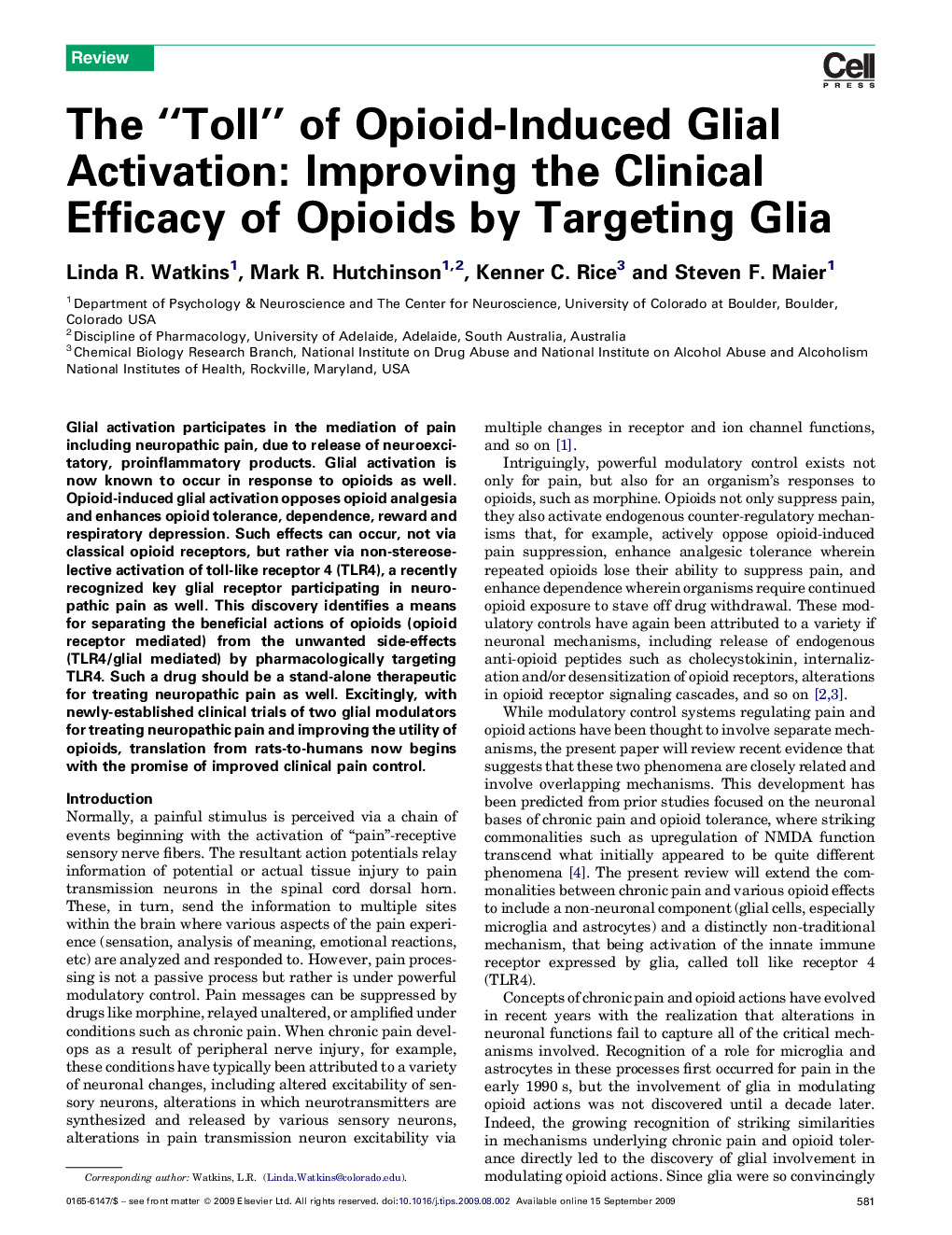| Article ID | Journal | Published Year | Pages | File Type |
|---|---|---|---|---|
| 2573201 | Trends in Pharmacological Sciences | 2009 | 11 Pages |
Glial activation participates in the mediation of pain including neuropathic pain, due to release of neuroexcitatory, proinflammatory products. Glial activation is now known to occur in response to opioids as well. Opioid-induced glial activation opposes opioid analgesia and enhances opioid tolerance, dependence, reward and respiratory depression. Such effects can occur, not via classical opioid receptors, but rather via non-stereoselective activation of toll-like receptor 4 (TLR4), a recently recognized key glial receptor participating in neuropathic pain as well. This discovery identifies a means for separating the beneficial actions of opioids (opioid receptor mediated) from the unwanted side-effects (TLR4/glial mediated) by pharmacologically targeting TLR4. Such a drug should be a stand-alone therapeutic for treating neuropathic pain as well. Excitingly, with newly-established clinical trials of two glial modulators for treating neuropathic pain and improving the utility of opioids, translation from rats-to-humans now begins with the promise of improved clinical pain control.
